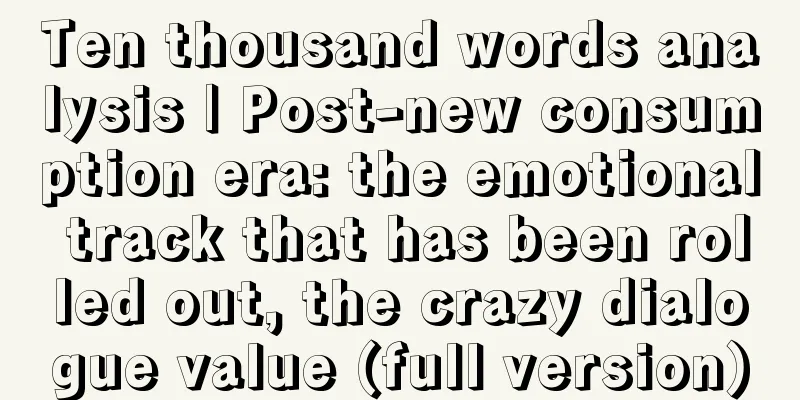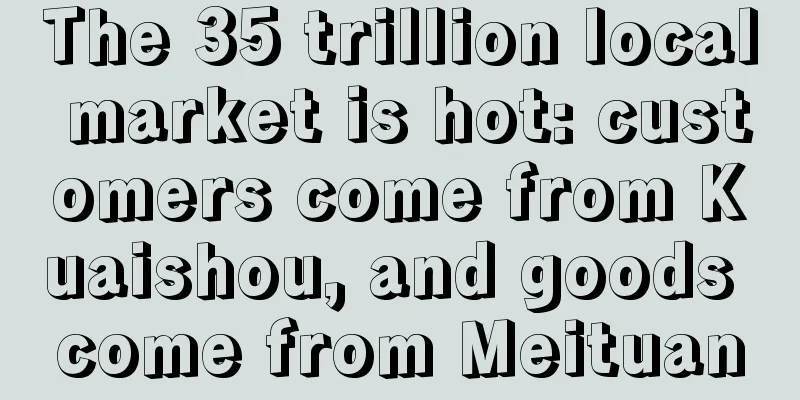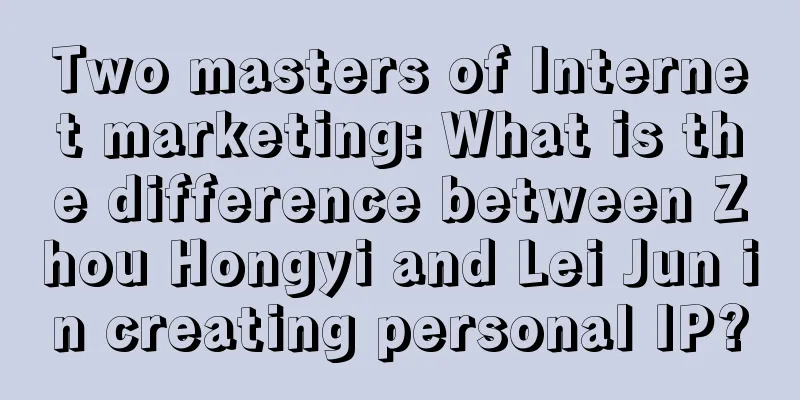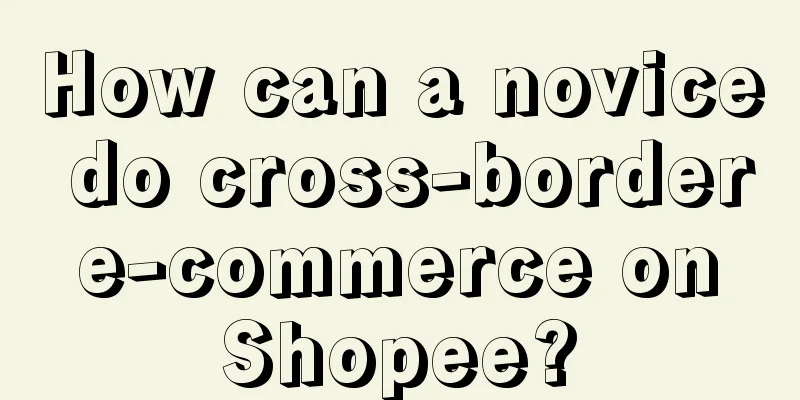Ten thousand words analysis | Post-new consumption era: the emotional track that has been rolled out, the crazy dialogue value (full version)

In August 2023, Wu Sheng proposed the new concept of "Dialogue Era" in his speech at the beginning of autumn entitled "Explosion of New Species·Wu Sheng Business Method Release 2023". In the first month, "Barbie" pink became popular, followed by HEYTEA X FENDI's "Joy Yellow", and then Luckin X Moutai's "All People Are Addicted" and Huawei's "Bentong" came out. Two months ago, starting with "dopamine dressing", "dopamine raw coffee/tea/juice"... dopamine is everywhere, and everything can be dopamine. Going back further, in February 2023, Wunderman Intelligence pointed out in its "2023 Global Top 100 Trends Report" that people are determined to fight the ongoing difficulties with vitality, strength and uplifting spirit: Pantone promotes "Extraordinary Magenta", Benjamin Moore has "Raspberry Red", and luxury brands also light up the catwalk with various "bold and colorful" colors. ▲Pictures from the Internet This article starts with Wu Sheng’s speech and talks about the new consumption momentum compounded by “dialogue era x emotional value”, or the new way of playing in the post-new consumption era. 1. This is an era that requires “dialogue” 2. In the era of dialogue, the "emotional track" that running has entered, and the "emotional value" that can be expected in the future 3. Four new ways to play new emotional dialogue 3.1. Meaningful exploratory “dialogue” 3.2. Conversation with like-minded people 3.3. "Dialogue" to build consensus using scenarios 3.4. Co-creative “dialogue” that inspires belonging 4. What is “dialogue”? Why do we need “dialogue”? 1. This is an era that requires “dialogue”
Wu Sheng believes that after connection, "dialogue" is the best choice in this era. He also gave 6 dialogue clues: new overseas expansion is a dialogue on values, new intelligence is a dialogue on scenarios, new sinking is an instant dialogue, new aesthetics is a dialogue on concepts, new communities are micro-dialogues, and new efficiency is a dialogue on creativity. After sorting out, Brand Ape believes that the following four concepts need to be anchored in particular: Concept 1: Build a conversational interface and invent your own eraWe have entered the stage of "inventing yourself" from "discovering yourself". We should be more precise in prompting words like GPT and learn to build a "conversational interface". Concept 2: Continuous dialogue is more important than precise connectionNew businesses in recent years, membership-based warehouse supermarkets, social group buying, DTC brands, autonomous driving subscriptions, content platform subscriptions... these new models all point to one conclusion: the essence of new community business is a collection of "real relationships." Concept 3: A conversation with AI is a conversation with the futureAI is a work partner, not a tool - Work with you, not for you. This sentence is simple but important. Brand Ape also wants to expand the scope of "dialogue" a little bit: Concept 4: Asking questions is more important than solving themBusiness generally creates wealth by "discovering problems" and "solving problems". In the past, there were many problems in society, which determined that the bottleneck of business scale was in the "problem solving" link; however, this bottleneck relationship is being reversed in the AI era, that is, it has become "few problems" and "excessive solving capabilities." Therefore, Yamaguchi Shu put forward three points in "The New Human Era":
Let's zoom in a little bit. Socrates was known as the "midwife of knowledge" for his heuristic conversations; Schumpeter advocated the "open door theory" (if you ask a question, I give you an answer and put a period, which is equivalent to closing the door for you). Elon Musk began to question the meaning of life at the age of 12, and realized from "The Hitchhiker's Guide to the Galaxy" that any answer is absurd, and only the question behind the answer is meaningful. Therefore, Professor Li Shanyou concluded that the meaning of life lies in your "questions"!
This may be the real value that "dialogue" brings to this era. 2. In the era of dialogue, the "emotional track" that running enters and the "emotional value" that can be expected in the futureLet us return to new consumption phenomena, brands and marketing innovation. In the past, consumers flocked to a product if they had a positioning, a concept, a lifestyle, or an internet celebrity. But today, it is difficult to attract people without "emotion".
The starting point of all these phenomena can be attributed to "emotion", which goes beyond the class/product/circle/interest group and turns to a certain "emotion". 1. Emotional Marketing in the Past
In fact, "emotional marketing" has existed for a long time and has repeatedly become a magic weapon for popular products to go viral. McDonald's and Coca-Cola dominate the world with emotional marketing; Jiang Xiaobai Expression Bottle rises to the top with emotional expression; "Escape from Beijing, Shanghai and Guangzhou" becomes popular with the emotion of escape; "Wolf Warrior 2" breaks the box office miracle with the confidence of a great power; Pop Mart blind box goes public by selling surprises; there are also "nostalgia" emotions, "healing" emotions, "good luck" emotions... There is always a wave of "emotions" on the way. It is easy to understand why "emotional marketing" can go viral: ① Emotions between people are highly contagious; ② Strong emotions can easily lead to dissemination; ③ Social networks can boost it, especially in an era when content was scarce. Although the "emotional marketing" in the past was remarkable, most of it can be attributed to "insight into society → driving/selling → you and me", but today's "emotional track" is different - its logic is "deep into life → companionship and dialogue → us". 2. Current "Emotional Track"Looking back at various nodes and cross-border marketing in 2023, you will find that more and more brands are "communicating" with every user with a level perspective, equal attitude and sincere emotions. For example, using the characteristics of nodes to create emotions for new products, and "responding" to the specific emotions of each festival through node marketing; going beyond 1.0 of creating topics through joint ventures and 2.0 of producing peripheral products, and starting to explore emotional dialogues 3.0; and healing emotions 2.0, which is not simply a wave of posters, copywriting, and movies, but accompanying users to truly do something.
▲《SocialBeta 2023 Top 10 Digital Marketing Trends》 The ways of playing vary, but the similarities are: they realize that people's emotions need companionship, support, transfer, resolution and outlet, and through multi-dimensional dialogue, expression and action, they become the beneficiaries of this round of marketing innovation. 3. The “emotional value” of the futureIn the second half of 2023, we will find that the "emotional value" evolved from the "emotional track" has a new life - with new values and new lifestyles as the common denominator, "dialogue" as the starting point, and "companionship" as the original intention, it will continue to promote the personalized and diverse development and release of the smallest emotional units. The simple understanding is:
From "Wukong" to the Populus euphratica spirit, from "Heroes have always suffered many hardships" to "The boat has passed through thousands of mountains" and "The endless power", "emotion" has become a part of the Huawei brand. ▲Pictures from the Internet For brands that aspire to make a difference in today's unstable, uncertain and complex world, whoever can grasp the "power of emotions" will seize the initiative in the new track; whoever knows how to release the "value of emotions" through "dialogue" will be able to establish long-term connections with more users based on close dependence and mutual trust; whoever can find the "meaning" of themselves and their users in "dialogue" will be able to gain new momentum for the brand's continued growth and move towards a new starting point for the future. In a sense, communicating with users (brand marketing) has never been so "difficult" and "simple". 3. Four ways to play new emotional dialogue: meaning, companionship, scene, and co-creation
As we all know, every era has its own questions to answer, every generation has its own feelings, every place has different sentiments, and every stage has different emotions. In other words, people's "emotions" are always changing and flowing. If you chase after or passively respond to every emotion, it will be like a monkey trying to catch the moon, and the result will be more trouble than gain. To make good use of the "dialogue value" and become the new kinetic energy and potential of the brand, you need to inject different "emotions" and start a dialogue from the following four aspects: "meaningful", "company", "scene", and "co-creation". 1. Meaningful exploratory "dialogue"
Xu Zhiyuan made a brilliant statement, "Our society today is not actually short of material things, but short of meaning. The vast majority of consumption is actually consumption of meaning and identity"; from this, Luo Zhenyu proposed a definition of "new consumerism" - using consumption to solve the problem of lack of meaning. In other words, we live in an era of great leap forward from consumer sovereignty to life sovereignty, and the "individual" is obviously more important; this is also an era of saturated material and exhausted meaning, and "motivation" is the greatest energy in modern society. At this time, "meaningfulness" will be the antidote for individual and social consumption emotions. New consumer brands can find "meaning" in conversations through three levels of exploration. Exploration 1——Dialogue with individual life and find new meaning When an upward life is interrupted by external forces, many people turn to inner spiritual exploration. People no longer expect a common life, but instead desire to see other individual stories and draw new life inspiration and experience from them. The following should be compulsory courses for future brands:
In addition, brands can explore more valuable meanings by talking to real public intellectuals and scholars. Beichen Youth, Youth Magazine, Youth Center, 13 Invitations, and I Study on the Island are all outstanding in this exploration. ▲Pictures from the Internet Compared with the past, these conversations are equal and calm, with no finger-pointing but sharing. Exploration 2 - Talk to yourself, explore the meaning of entrepreneurship and "meaningful innovation" There is a kind of innovation and entrepreneurship that starts from one's own passion and desire. This model has become a key factor for many DTC brands and new consumer brands to stand out. This kind of innovation is also called "meaningful innovation." What is “meaningful innovation”? — A new vision for a problem that is worth solving, not just in a new way, but for a new reason. If we regard “meaningfulness” as a “gift” to the world and entrepreneurs, everything will be easy to understand:
Of course, you will also be pleasantly surprised to find that business success comes naturally because: ① People love things that are "meaningful"; ② "Meaningful innovation" is the real value innovation; ③ "Meaning" cannot be copied! Exploration 3——Dialogue with the times/society/nature, there is always a meaning for your existence In today’s and future marketing, the brand mission is not only to “create customers (Drucker)”, but also to solve or influence some social problems by creating value through creating customers. This will be the inevitable transition for every new consumer brand. Unlike the past, the new dialogue does not need to participate in grand topics such as public welfare, charity, business for good, environmental protection, etc., but to find specific "small things" that suit you, produce effective results, and act together.
The essence of the new dialogue "era" is to build a bridge between business, life and meaning to save and revive something that exists in everyone's heart. What emotion to inject: "Love" The illusory "love" is actually extremely powerful in business. As Starbucks founder Schultz said, "No matter how big the business empire is, it will eventually be defeated by love and kindness." Because we love meaningful things and all beautiful things; we get pleasure from caring for others and get a sense of accomplishment from caring for society; we love what we create and what we love. When a brand takes "love" as its origin, engages in dialogue with individuals, itself, and the times, and strives to become the backbone of promoting various "meaningful" issues, it will also have a closer connection with the society as a whole and the times, and gain more lasting love from people. 2. Companionship "dialogue" with like-minded peoplePsychologically, humans are social animals. We need to establish connections with others and share life experiences. This is an emotional necessity. In sociology, people want to maintain their individual independence, but also want to find a common ground and gain emotional value from like-minded people. In addition, in this age of material saturation, real connections between people are precious, and people who can listen, have patience and positive energy are even more scarce. At this time, new consumer brands and new communities that are willing to listen, accompany and grow together have emerged. They accompany in three aspects: common growth, new communities and active response. Companionship 1: Long-term companionship - growing together with users Early emotional marketing was driven by emotions; past emotional conversations were based on hot topics; later community operations were based on interests; today, brand communities are looking towards long-term and tribal construction, shifting from interest-oriented to a group of like-minded people exploring new lifestyles together. Tianzhen Juice's "Little Hat Plan" has been with users for 7 years; Sandunban's "Return Plan" has gone through 7 seasons with users; Lululemon's hot sweat activities have been running through the brand's establishment from Europe and the United States to China; Anaya has been building a life community since 2013, and in 10 years, it has evolved into nearly 100 owner-managed communities. ▲Pictures from the Internet When brands lead users to delve deeper into a certain field and continuously enhance their emotions in activities, a long-term, deterministic companionship centered on common beliefs and growing together, and a unique IP with a sense of belonging is established. It cannot be said to be unbreakable, but at least they empower each other. It should be noted that in this process, if consensus or resonance cannot be reached, the activity will naturally be abandoned halfway. Companion 2: From conversation circles to new communities - accompanying users with super partners In the new consumption era, consumer stratification has become increasingly obvious. Some brands have grasped the trend, started "dialogues" with highly compatible interest circles, and reaped waves of dividends. However, in the post-new consumption era, "dialogue" alone is not enough. It is also necessary to build circles and create "new communities" that can grow on their own: ① Satisfy users' needs for social relationships and become their partners and supporters in the pursuit of "interests"; ② It also gives them a support in their interests, stimulates their enthusiasm and motivation to delve into their interests and hobbies and explore new things; ③ Encourage them to define themselves and develop their potential more deeply. As far as the brand is concerned, building new connections between community members and making the "new community" a small community that permeates daily life and even becomes a public IP is something that requires little investment and has unlimited imagination. This requires brands to find super partners to co-build a "new community" and help them become the core, opinion leaders, managers, and even shareholders of the new community.
Two new understandings are needed about the “new community”:
Because of this, Luo Zhenyu's "Friends of Time", Liu Run's "The Power of Evolution", Wu Sheng's "Explosion of New Species", and Chaos Academy's annual lectures, in addition to selling courses and marketing, are more importantly about creating a "field" as Professor Li Shanyou said, a "field" for members to learn. In the new business ecology, re-understanding and re-building the "new community" will enable dialogues with users at a higher level, which also means more professional user connections and more expanded participatory co-construction. Companionship 3: Active response companionship - empathy When talk shows become popular, go and join in on the talk shows; when dopamine becomes hot, launch new color combinations; when Barbie becomes popular, collaborate with Barbie... Why is it that many brands have tried their best but still find it difficult to stand out? This is the difference between "passive" and "active": are you passively following the trend, or are you actively creating? How to proactively create? Just three steps.
MINISO’s performance with “Barbie Doll” is remarkable: from the same frequency emotional value (simple happiness) to the exclusive emotional power (pink and pink matching), from special products and event experiences to all-round communication venues, and more importantly, it directly drives sales. ▲Pictures from the Internet After all, the public's attention and purchasing power are limited. In addition, social hot spots are constantly changing, and without proactive creation and empathetic companionship, your "response" is often drowned out by many events. What emotions to inject: Like-minded
I prefer what Liu Xiaolu, founder of NEIWAI, said: "A truly good consumer brand is defined together with a group of like-minded users." Aranya founder Ma Yin had a similar expression:
In short, the premise of companionship-style "dialogue" is: find the right person, find like-minded people, find super partners. 3. "Dialogue" to build consensus through scenariosMobile Internet provides us with an unprecedented opportunity to connect people and all supply and demand through "scenarios". Such scenarios respond in real time, can be activated at any time, connect efficiently, and create continuously. Just like a simple cup of coffee, with a "scene", it shows different attitudes, derives multiple new products, presents different expectations and completely different experiences. So there is the magical performance of the Chinese coffee market. At present, digital intelligence (AI) + mobile, + home, + travel, + health... these verb "scenarios" that are closely related to everyone's life have emerged. They not only expand the boundaries of life, but also deeply affect our thinking paradigms, behavior patterns and lifestyles. Regardless of the type of scene, it all starts with people’s “emotional consensus”. To put it more bluntly, the dialogue “scene” is to build a “consensus” with users and interpret new emotions and values based on it. This is the real scene play method. In the post-new consumption era, we start the conversation from 5 new "scenarios". Scene 1 - Dialogue life scene: Focus on a real Creating scenarios to influence purchases through positioning/slogans, advertising/spokespersons, technology/traffic is becoming history; using the intelligence of "I understand you" and digital enhancement of "real" scenarios to bring progress to users will become an emerging opportunity in the era of dialogue. For example, the series "She Changes" by Quanmianshidai explores the "changers" in the female world, and the summer market of Xiaohongshu "Friendship and Delivery" tells a humane trading story; Taobao's "One Thousand and One Stores" project brings to the forefront the 1001 kinds of life behind the featured stores. There are two "truths" that need to be noted:
Scene 2——Dialogue with the “Art Museum” scene: From the palace to the daily life
Countless brand experience centers, commercial spaces, community blocks, art festivals, life festivals, and music festivals, along with the upgrading of lifestyles and aesthetic needs, have begun to eliminate the boundaries between commerce and art, time and space, consumption and experience, and have prospered and evolved in a hybrid way, forming one of the mainstream logics of today's new consumption. This logic can be found in the methodology of "Art Museum" proposed by Wu Sheng.
When "art museums" are successfully integrated into everyone's life, art sinks from the palace into daily life.
When more people use their true feelings to supplement and confirm art and complete the co-construction of concepts, art will have new vitality, and "artifying daily life", "art serving the people" and "people's artist" will no longer be empty slogans. Scene 3 - Dialogue with "Critical Enclave": Romantic Redemption Virtual venues and physical spaces merge together, becoming new activity and social spaces with the most familiar strangeness. This is the "critical enclave": an experimental and challenging space that "gives unlimited virtual meanings to limited real space" and a scene that can project complex emotional critical experiences for the current group. For example, Omega Mart, which was created with the participation of more than 300 artists from the United States; Ikehei Aquarium, which was transformed from an abandoned elementary school in Japan; and "Only Henan·Drama Fantasy City" in Henan, China. In fact, brands can do more. In product development, content creation, and marketing innovation, they can build scenes at the "intersection of reality and virtuality" to create a romantic experience of "critical enclaves" for users. For example, Coca-Cola's Creations platform; Airbnb's 2022 "OMG! Odd House Fund" plan; and the "Story Store" on Yuyuan Road in Shanghai. "Critical Enclave" has in fact become a romantic redemption for some young people's current spiritual crisis; a journey of emotional healing and consolation, but also a living community and spiritual home for a group of people. Scene 4 - Localizing the dialogue: sincerity and respect No matter how exciting and fun digital and virtual life may be, people will always need real face-to-face contact to build more stable and lasting relationships. At this time, the physical "store" becomes the core force of scene dialogue and an important space for reaching consensus.
Whether it is "experience center", "non-standard store", "fireworks aesthetics" or "urban temperament", these creative spatial expressions help brands get closer to the people in the city in a physical sense; and localized brand expression allows the brand to fully integrate into the local cultural context and resonate with local consumers on a spiritual level; more fundamentally, "localization" is respect for the place and the local lifestyle. Scene 5 - Dialogue "New Sinking": Immediate Emotional Value
Wu Sheng's "new sinking" is more open: the "new sinking" is not really sinking, but a deeper, equal and present "dialogue"; it is the creation of an "instant emotion". For example, are Luckin Coffee, Miniso, and Mixue Ice City just extremely cheap? Another factor that cannot be ignored is the "freedom of freshly made products" behind them. Even if it is only 9.9 yuan or 5 yuan, every time you go to the store to buy something, you are giving it due meaning. The new sinking must be "presence" and must be "immediate emotion." Looking at Zibo BBQ, Cunchaocun BA, etc. from the perspective of "new sinking", you will find that behind these popular products there is a kind of "instant emotion" catharsis, a dialogue of equal rights on the spot, and the achievement of a daily consensus: whoever gives me equality, I will be equal to him; whoever lets me choose, I will choose him. What emotion to inject: "Surprise" The expression of ideas should not be hasty, and building consensus in scenarios requires patience, but if there is a "surprise", it will definitely achieve twice the result with half the effort. What is "surprise"? Borrowing the word "surprise" from philosophy, we set the key emotion of the dialogue scene as "surprise" - a scene experience that the group cannot imagine and far exceeds expectations. Whether it is the "real" life scene, from the palace to the daily "art gallery", the "critical enclave" of romantic salvation, or the sincere "localization", the "new sinking" of immediate emotional value, only in the user's expectation of "surprise" can the transformation from self-entertainment to other-entertainment be completed, and the future will win over the past. Only with the "surprise" can we enter the door to "dialogue" that truly uses scenarios to build consensus. 4. Co-creative “dialogue” that inspires belongingXiaomi has created an extraordinary business miracle with its cost-effectiveness and sense of participation; and its perseverance is a fusion of Lei Jun's emotions: dreams, growth, yearning, and respect and sincerity for users. ▲Pictures from the Internet In fact, Xiaomi's "sense of participation" has only opened a "door" to the future. The real new forces are those brands that inspire co-creation "dialogues" of belonging. For them, co-creative "dialogue" is not a means, but a new force, new ideas and a new world. (1) The new force of brand innovation: dialogue "co-creation"
When individuals change from passive consumers to active people, and when "everyone is a creator"; when brands emerge that recognize that "it is no longer the companies but the users who create brands, and it is not the companies but the users who gain meaning who own brands", co-creation "dialogue" begins. When society moves from a single economy to sustainable "shared value"; when the "sharing" fourth consumer era grows in Japan and even the world; when web3.0 and AI become the most mysterious and powerful forces for change in life, "co-creation" dialogues begin to grow wildly. Here we have Lego, the king of "co-creation" players; Procter & Gamble, a giant that has already formed a "co-creation" system; there are also various European and American DTC brands such as Everlane and Glossier; MOOC education and Khan Academy for public co-creation; "B Corp" and the great "1% Earth Tax" movement. Small can help individuals realize their own self, form emotional belonging, and settle their hearts; medium can build brands and trigger innovation; large can participate in grand narratives and do meaningful things. Therefore, "co-creation" dialogue is becoming a key force for comprehensive marketing transformation. (2) The essence of co-creative “dialogue”: from “I” to “we” The essence of co-creation dialogue is to establish a "new relationship" with users, employees, and ecological partners - co-building and even sharing brands. So, here we are!
The "I" here refers to the brand entity, including the company, organization, and shareholders; the "we" refers to all participants who are connected by common ideas, including the company, employees, users, partners, and stakeholders. In September 2022, Starbucks did something tough with "us" - the "Starbucks Odyssey" plan. The plan changes the traditional brand-centric membership system into a decentralized republic system/ecosystem shared by multiple parties: brands + members + employees + partners, etc. Its essence is to create a new relationship around people who love coffee: "We, all participate, own, co-create and share the relationship". (3) The concept of co-creative “dialogue” - a completely different way of thinking In the eyes of Brand Ape, co-creation “dialogue” is not a technical issue, but a conceptual issue:
With the above concept, the questions of those tactical manuals: how to participate? How to build trust? Where does stickiness come from? Who gets rewards, who pays, who decides? Who gets commended, who has status? They can be effectively created, thus forming a positive cycle and feedback. (4) The key to co-creational "dialogue" - belonging, respect and self-realization People are born to pursue "origination", whether it is a tribe, nation, religion, country, party, community, or family. To play the co-creational "dialogue", you need to climb the ladder of the "Maslow's Hierarchy of Human Needs Model":
A person's willingness to buy products may be a need: psychology and physiology, spirit and material things; perhaps products and services can empower him (pleasant) and gain a sense of security. A person's loyalty to a certain brand must be because he defines his identity, finds his kind, and has a sense of belonging. However, only when they act together to do something meaningful, create value, assume responsibility, gain respect, and realize themselves can they go further and longer together. Mendeleev's periodic table, Wikipedia and the ever-lasting TED are the best displays of co-creational "dialogue". Therefore, the key to co-creational "dialogue" is not to encourage and motivate users to participate - but whether it can form a sense of belonging, win respect, and realize oneself. A larger perspective and perspective is that co-creational "dialogue" is a methodology for realizing "Maslow's needs"; even, co-creational "dialogue" itself is a great and noble cause, which gives everyone a fair participation and opportunity to create the future. What emotions are injected: "Sincerity" The co-creational "dialogue" is the most intense form of expression in the digital era, and it is also the most difficult to control gameplay. It is also the basis of all advanced level marketing activities in the future and the basic composition of the entire brand activities. If you want to subdue or play with it, you need to inject "sincerity".
As "transparency" becomes the underlying cognition of the new business civilization, only "sincerity" can inspire co-creational "dialogue" to continuously generate these scarce emotional values of belonging, respect and self-realization. 4. What is the essence of "dialogue" and why "dialogue" is needed?From Socrates's Dialogue Dialectics, Plato's "Ideal Country" to Confucius' Analects of Confucius, the thinking structure of "dialogue" answers the logic and truth of things in its unique way of operation, and shows the rhythm of cognition in tension, thereby triggering new problems, new thinking and new concepts, and becoming a magical "force" that breaks the boundary between "possible" and "impossible". Today, the "dialogue" we are discussing is not a dazzling ChatGPT question game, nor is it a process of transitioning from a certain answer to an uncertain question, but a cognition and attitude at the level of value. 1. So, what is the essence of this round of "dialogue"?In the first half of 2023, when we stand at the beginning of the creation of AI, "human-computer intelligence" becomes the real engine of this wave of technology; in the second half of 2023, when the human-computer interaction scenario becomes a normal state, AI natives begin to rise, and a large number of new emotions and new desires grow in the soil of AGI, you first need to understand the essence of this feast. The essence of human-computer intelligence = "Creative dialogue". This "creative dialogue" is not to instantly find a relatively perfect solution from the human knowledge base through its own keywords and questioning abilities; not only to treat human-machine intelligence as a tool to improve efficiency and create new tools in the tools; we should also regard human-machine intelligence as a "creative tool" and the "creative emergence" of human-machine collaboration. Insight into the essence of "dialogue", understanding the meaning of "dialogue", and mastering the method of "dialogue" will become the decisive factor for individuals, companies and organizations to occupy the new business civilization and ecology in the future. 2. Why "dialogue"?Let’s sort out the logic of new consumption. We stand at the gate of a new world where risks are exacerbated and opportunities are raised: new consumption is no longer "problem consumption" or "scenario consumption", but "meaning consumption"; new people are no longer "consumers", no longer value possession, but advocate mobility, sharing and co-creation; new brands not only need to provide better products, but also continue to create new "value". Where should we go? Only "dialogue". Only "dialogue" can penetrate and integrate into the discourse system/circle/life of the new consumer group, and condense the emotional value from consensus to resonance; it is possible to break out of the rule positioning/super symbols/hot products/traffic pools set by super manufacturers, and open up your own "new continent". Take Luckin X Moutai’s cross-border marketing, which is "leading the whole nation" as an example.
Comparing the Joy Yellow of Heytea XFENDI not long ago, if Luckin does not have an "equal" attitude, no "emotional injection", no "consensus" scene, and no "co-creation" that inspires belonging, can it surpass him? 3. Marketing in the post-new consumer era begins with "dialogue"At this time, let’s appreciate what Wu Sheng said in "New Species Explosion·Wu Sheng’s Business Methods 2023" - "Dialogue" is more important than "connection".
"Dialogue" is a "ordinary" word, a word that is familiar to almost unfamiliar, and a word that can describe the sustainability and creativity of new consumption afterwards. When we inject "love" into meaningful exploratory "dialogues", find "like-minded people" in companionship "dialogues", create "surprises" in consensus scenario "dialogues", and use "sincerity" to deepen the sense of belonging for co-creation "dialogues", "new consumption" will be completely different - "dialogues" will have a new mentality: equality, level eyes and parallel; and also new values: co-construction, co-creation and co-existence. Under dialogue, the problem begins; during dialogue, ideas surge; after dialogue, future imagination. This is the beginning. We are standing at the beginning. Author: Brand Yuan, WeChat public account: Brand Yuan (ID: brand-yuan) |
<<: "Freeloading" has become the first choice for marketing
>>: Guide to Asking for Help | Don’t let not knowing how to ask for help ruin your career!
Recommend
Can Shopee buyers apply for a partial refund? What are the refund situations?
On the Shopee platform, you can buy many products ...
What should I do if my Amazon store has a low review rate? How can I increase the review rate?
The review rate of an Amazon store has a relativel...
"Blast the Internet"! The first broadcast sales of Dong Yuhui's new account exceeded 100 million yuan. What new signals did it release?
This article analyzes in detail from four aspects ...
150,000 fans, monthly GMV exceeds 10 million: We found the secret of the manager's high sales
Xiaohongshu e-commerce is positioned as a "li...
How to increase Wish sales? How long does Wish show sales?
Among e-commerce platforms, Wish, as an internatio...
Amazon MCF sellers can package footwear and apparel orders without brands
Amazon Europe recently announced that Multi-Channe...
How to file a complaint against a cross-border e-commerce platform? How to protect your rights?
Everyone knows about cross-border e-commerce platf...
China's own "poor ghost meal" is selling like hot cakes on Douyin
In the era of economic downturn, "poor guy me...
How to price cross-border e-commerce products? What are the pricing techniques?
In the cross-border e-commerce industry, product p...
2018-2023, Chronicle of the Rise of Douyin Brands
E-commerce and traffic are closely related. In oth...
Why is business logic so important?
This article introduces the basic concepts of busi...
Private domain content creation: 10 "tricks and techniques" to teach you how to increase your influence!
This article starts with creating good private dom...
Various data positions, a complete analysis of the truth
In the digital age, data jobs are springing up lik...
Xiaomi SU7 is a hot seller, why do people think it is great value for money?
This article explores an important strategy in pro...
Product data analysis: optimize product strategy and improve sales conversion
The article discusses in depth how to optimize you...









